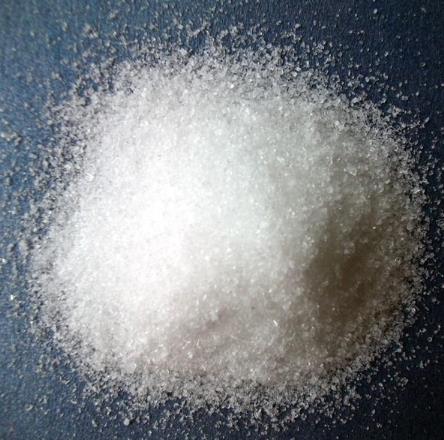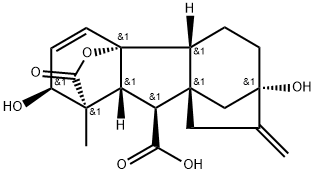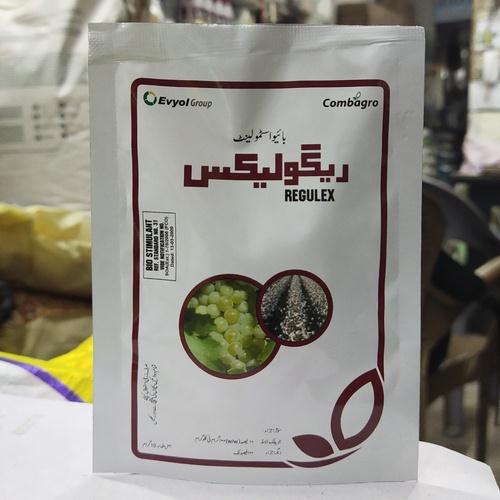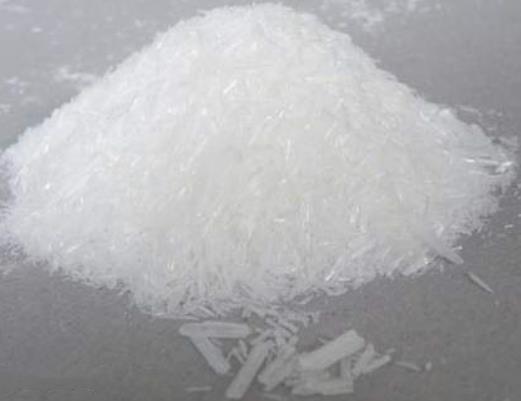Gibberellic Acid: The Catalyst for Modern Agricultural Innovation
Discovery
Gibberellins commonly known as gibberellic acids first came to the attention of western scientists in 1950s, they had been discovered much earlier in Japan. Rice farmers of Japan had long known of a fungal disease called foolish seedling or bakanae disease in Japanese that causes rice plants to grow taller and eliminated seed production. Plant pathologists found that these symptoms in rice plant were induced by a chemical secreted by a pathogenic fungus, Gibberella fujikuroi. Culturing this fungus in the laboratory and analyzing the culture filtrate enabled Japanese scientists in the 1930s to obtain impure crystal of two fungal “compounds” possessing plant growth promoting activity.
In the same year, 2 research groups, one at Imperial Chemical Industries in Britain and other at the US Department of Agriculture (USDA) in Illinois, elucidated the chemical structure of the compound that they had purified from Gibberella culture filtration and named gibberellic acid. This compound was later shown to be identical to the gibberellin isolated by the Japanese scientist. For this GA3 is also referred to as gibberellic acid. GA3 is the principal component in Gibberella culture. The GA3 is the most frequently produced GA in commercial industrial scale fermentations of Gibberella for agronomic, horticultural and other scientific uses.1

Figure 1 Characteristics of Gibberellic acid
Biosynthesis
Gibberellic acid (GAs) are endogenous plant growth regulators, having tetracyclic, diterpenoid compounds. After valuable efforts to understand the GA biosynthesis and movements, the appropriate site of bioactive GA in plants or tissues targeted by bioactive GAs to initiate their action has not yet been confirmed. Dwarf plant bioassay and its quantitative analysis revealed the presence of GA in active growing tissues i.e., shoot apices, young leaves and flowers. In contrast, there are some reports for the presence of GAs in xylem and phloem exudates, indicating a long-distance transport of Gas. The transport of active GAs and their intermediates was supported by grafting experiments. The contradictory results obtained from different experiments could not pin-point the site of synthesis of bioactive GA.
Gibberellic acid being synthesized via the terpenoid pathway, require 3 enzymes viz., terpene synthase (TPSs), cytochrome P450 monooxygenase (P450s) and 2-oxoglutarate dependent dehydrogenase (2 ODDs), for the biosynthesis of bioactive gibberellic acid from GGDP in plants. Two terpene synthase, ent-copalyl diphosphate synthase (CPS) and ent-kaurene synthase (KS), located in plastids, involved in conversion of GGDP to tetracyclic hydrocarbon intermediate ent-kaurene. ent-Kaurene is then converted to GA12 by 2 P450s. First, ent-Kaurene oxidase (KO) present in the outer membrane of plastid, catalyzes the sequential oxidation on C-19 to produce ent-kaurenoic acid. Second, ent kaurenoic acid oxidase (KAO) present in endoplasmic reticulum is subsequently converted to GA12. Bioactive GA4 is converted from GA12 through oxidations on C-20 and C-3 by GA 20-oxidase (GA20ox) and GA 3-oxidase (GA3ox), respectively.
Effect on Seed Germination
Seed contains embryo that is arrested to develop in to plant with appropriate environmental conditions to continue their life cycles. Breaking of seed dormancy to germination is controlled by some physical factors (light, temperature and moisture) and by the endogenous growth regulating hormones (GA and ABA).
Gibberellic acid stimulates the seed germination whereas, ABA is involved in the establishment and maintenance of dormancy. GA exerts its influence in two manners, first by increasing the growth potential of embryo and second by inducing hydrolytic enzymes. During seed germination embryonic gibberellic acid is released that triggers the weakness of seed cover by stimulating gene expression involved in cell expansion and modification as reported in Arabidopsis. GAs represent a natural regulator of the processes involved in seed germination to stimulate the production of hydrolytic enzyme i.e., ά-amylase, in the aleuron layer of germinating cereal grains. Cereal grains can be divided into 3 parts i.e., embryo, endosperm and seed coat. The endosperm is composed of the aleuron layer and centrally located starchy endosperm. The starchy endosperm, typically non-living at maturity, consists of thin walled cells with starch grains surrounded by aleuron layer, having thick cell wall with protein bodies. As consequences, the stored food reserves of the starchy endosperms are broken down into soluble sugars, amino acids, and other products that are transported to the growing embryo.1
References:
[1] RAMWANT GUPTA S K C. Gibberellic acid in plant: still a mystery unresolved.[J]. Plant Signaling & Behavior, 2013, 8 9. DOI:10.4161/psb.25504.You may like
Related articles And Qustion
See also
Lastest Price from Gibberellic acid manufacturers

US $5.30/KG2025-09-28
- CAS:
- 77-06-5
- Min. Order:
- 1KG
- Purity:
- 90%
- Supply Ability:
- 200tons per week

US $1.00-4.00/KG2025-05-14
- CAS:
- 77-06-5
- Min. Order:
- 1KG
- Purity:
- 99%
- Supply Ability:
- 200000KG



